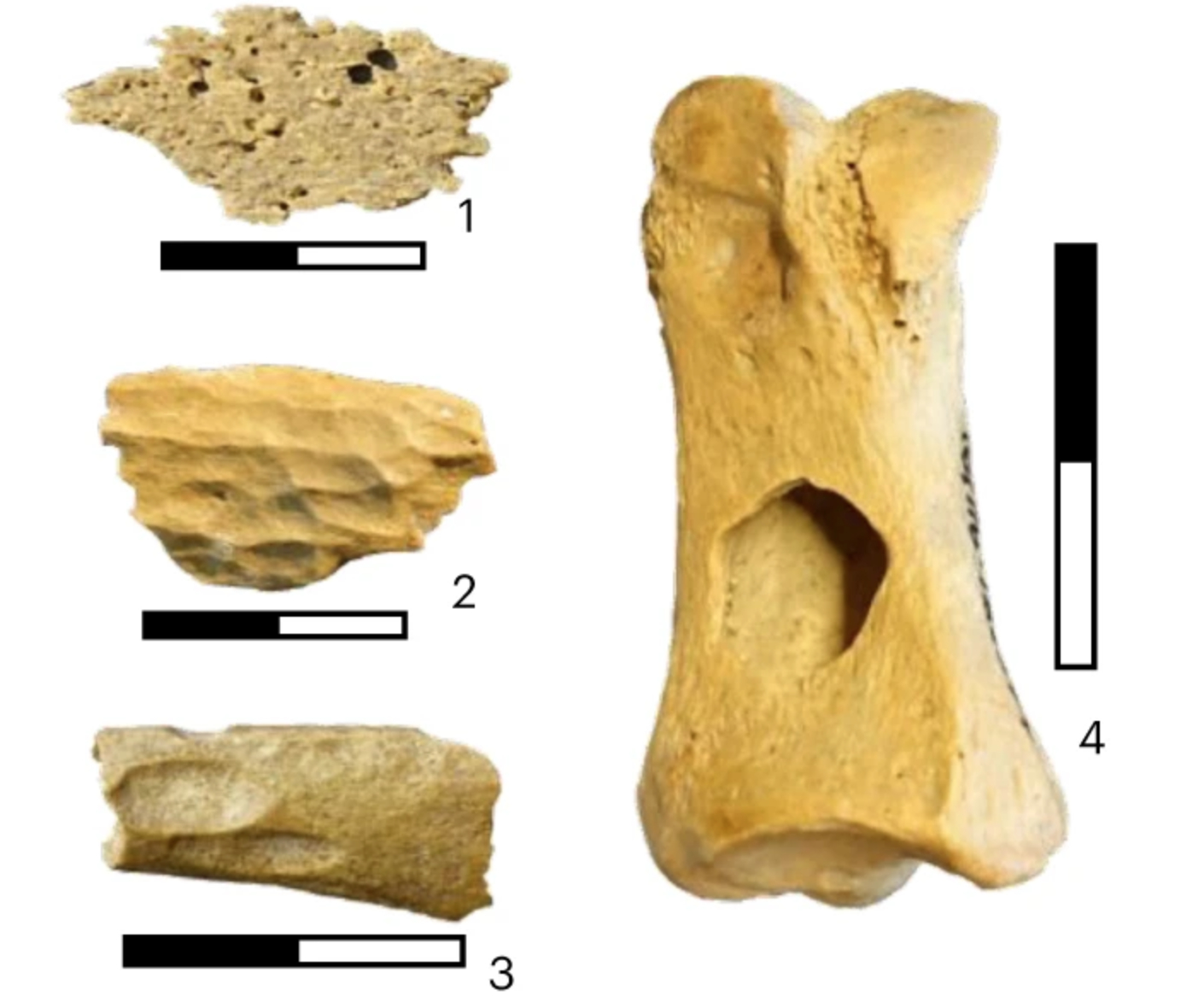
Researchers discovered bone fragments in a cave in Central Germany, indicating that our ancestors explored the higher latitudes of Europe over 45,000 years ago. This discovery changed what we have known thus far about the early days of Homo sapiens in Europe. At that time, Neanderthals, our cousins, were still living in the area.
The new scientific revelation unveils a significant find as researchers pinpointed 13 Homo sapiens skeletons in Ilsenhohle cave, beneath a medieval castle in Ranis, Germany.
Through ancient DNA analysis, scientists established that these bones date back to about 47,500 years ago. This discovery challenges our previous understanding, as the oldest known Homo sapiens remains in this part of Europe were thought to be around 40,000 years old.
Jean-Jacques Hublin, a paleoanthropologist from College de France in Paris and the leader of the research team, shared that these bone fragments underwent direct radiocarbon dating and provided well-preserved DNA of Homo sapiens.
Homo sapiens originated over 300,000 years ago in Africa
Homo sapiens originated in Africa over 300,000 years ago, journeying across the globe and interacting with various human populations, including Neanderthals.
Due to a limited fossil record, the specifics of how Homo sapiens spread across Europe and their role in the extinction of Neanderthals, who vanished around 40,000 years ago, remain unclear.
What a 45,000-year-old pit of bones reveals about our earliest human ancestors
Researchers have made a significant discovery in a cave beneath a medieval German castle. They found a pit of bones that had unlocked the secrets of the earliest humans. The remains were buried in… pic.twitter.com/3IHsmZS1q9— SCIENCE INFO CHANNEL (@SCIENCEINFOCHA1) January 31, 2024
In three studies featured in the journals Nature and Nature Ecology & Evolution, the research unveiled that the area was colder back then compared to the present, resembling the icy steppe-tundra found in today’s Siberia or Scandinavia. This sheds light on how Homo sapiens, despite originating in warmer Africa, swiftly adjusted to chilly surroundings.
The findings suggest that nomadic groups of hunter-gatherers, adapting to the frigid conditions, intermittently utilized the cave. They navigated a landscape filled with Ice Age creatures, sharing the space with cave hyenas and bears during other periods.
Homo Sapiens Bones and stone artifacts uncovered in Germany
Archaeologist Marcel Weiss from Friedrich-Alexander-Universität Erlangen-Nürnberg in Germany, one of the research leaders, noted, “The site in Ranis was occupied during several short-term stays, and not as a huge camp site.”
Evidence from the cave, including bones and stone tools, indicates these early people hunted large animals such as reindeer, horses, bison, and woolly rhinoceroses.
Geoff Smith, a zooarchaeologist from the University of Kent who led one of the studies, highlighted that it’s intriguing that both early Homo sapiens and late Neanderthals seemed to focus on large land animals, potentially leading to competition.
However, we still need more information to fully grasp the impact of climate and the arrival of Homo sapiens on the eventual extinction of Neanderthals in Europe.
See all the latest news from Greece and the world at Greekreporter.com. Contact our newsroom to report an update or send your story, photos and videos. Follow GR on Google News and subscribe here to our daily email!



